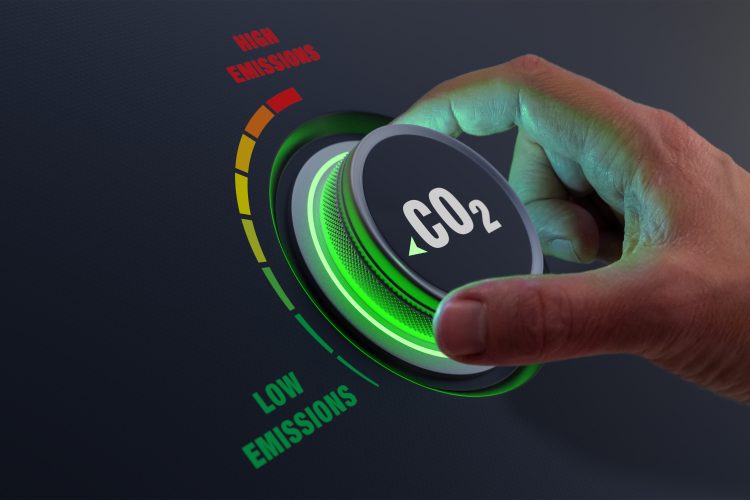Navigating the climate crisis: The journey towards decarbonisation
- Like
- Digg
- Del
- Tumblr
- VKontakte
- Buffer
- Love This
- Odnoklassniki
- Meneame
- Blogger
- Amazon
- Yahoo Mail
- Gmail
- AOL
- Newsvine
- HackerNews
- Evernote
- MySpace
- Mail.ru
- Viadeo
- Line
- Comments
- Yummly
- SMS
- Viber
- Telegram
- Subscribe
- Skype
- Facebook Messenger
- Kakao
- LiveJournal
- Yammer
- Edgar
- Fintel
- Mix
- Instapaper
- Copy Link
Posted: 1 February 2024 | Gilles Tisserand | No comments yet
As businesses increasingly acknowledge their role in mitigating climate change, Tetra Pak’s Vice President Climate & Biodiversity, Gilles Tisserand, shares his thoughts on how companies can accelerate their decarbonisation efforts.


By Gilles Tisserand
Tackling climate change is perhaps the single biggest challenge we face today, making decarbonisation not merely an option, but a necessity. The Paris Agreement’s 1.5°C limit is now largely symbolic, as research suggests there is a 66 percent chance the global temperature will overshoot this for at least one year before 2028.1The result is that businesses are recognising the need to take rapid and transformative steps to decarbonise at every stage of their supply chains.
This is a journey we are on at Tetra Pak, alongside our peers in the packaging and food & beverage industries. While we are not yet at net-zero – which we aim to reach in our own operations by 2030 and across our value chain by 2050 – I believe there is merit in sharing what we have learned so far.
Setting the right targets
No journey should begin before a destination has been set, making target-setting an important starting point for any business. These targets must walk a fine line – they must be both ambitious and realistic – and include mandatory checkpoints to assess progress. This is not yet a widespread practice. While 40 percent of the world’s largest publicly traded companies had set net-zero commitments by the end of 2022, only 50 percent of these incorporated a greenhouse gas (GHG) emissions reduction plan that included intermediate targets.
The Science Based Target initiative (SBTi) is designed to aid companies and organisations in creating effective emissions targets, primarily through a hierarchical approach: avoidance, reduction, mitigation, and compensation across the operations and value chain. Targets approved by SBTi are based on robust data and a solid methodology. Currently, out of those companies on the S&P 500 Index that disclose actions and commitments via CDP, only 12 percent have 1.5°C-aligned SBTi targets.
By ensuring transparency and prioritising tangible actions, a company can build trust from both partners and customers. We are reassured by achievements such as placing on the CDP’s A-list for corporate transparency and performance on climate change for four years running. It is recognition that our actions are delivering concrete results, pushing us to set our sustainability sights higher still.
Cumulative and collaborative action
An organisation’s supply chain often accounts for more than 90 percent of its GHG emissions, when taking into account overall climate impact. This makes collaboration with all parts key to addressing the decarbonisation challenge.
Kellogg’s is one company directly investing upstream, introducing technology to influence suppliers with on-the-ground interventions to support farmers, including smallholders within regions that can benefit from systematic change to supply chain models. Similarly, our ‘Join us in Protecting the Planet’ initiative sees us working closely with base materials suppliers to deliver improvements in the areas of climate, biodiversity, and circularity, with the ambition for our suppliers to reduce their GHG emissions by 50 percent by 2030.
Asking suppliers to measure and report on their emissions not only helps improve the sustainability of the supply chain, but it also has the additional benefit of futureproofing them as legislation-enshrined targets become more commonplace around the world.
If we move downstream, emissions are a consideration for any company, but particularly those that supply equipment to other businesses. For example, last year 55 percent of our total climate impact came from the equipment sold to, and used by, food and beverage manufacturers. We have set a target of reducing the carbon footprint of our best practice processing lines by 50 percent by 2030 (compared to 2019) by developing more efficient packaging and processing equipment and supporting manufacturers’ efforts to optimise their operations.
Health technology company Philips is also tackling the footprint of the equipment it provides its customers. It has set a goal of generating 25 percent of its revenue from circular products, services and solutions by 2025, closing the loop by offering a trade-in on all professional medical equipment, and employing responsible repurposing.
Addressing operations
To achieve meaningful decarbonisation, it is essential to address emissions at an operational level. We are committed to reaching net zero GHG emissions in our own operations by 2030 and are on track with a 39% reduction in 2022 compared to our 2019 baseline.
Operational changes are often driven by investment in new technology, such as renewable energy sources. Unilever is applying this to its manufacturing processes, phasing out the fossil-fuel burning boilers in favour of renewable heating technologies. It has also begun using the waste from the Marmite manufacturing process in an on-site anaerobic digester to produce biogas, providing 50 percent of the gas required to power their Burton factory, in UK.
A data-driven process
Overall, we have found the formula for effective action to be data collection and reporting, followed by adequate target setting using external validation. As with any endeavour, consistency is key. 2023 saw the release of our 24th sustainability report, and it is this long-term data collection that has provided the robust base from which we are creating change.
With regards to the latter part of that formula, we rely on third parties such as the independent experts we have on our Sustainability Advisory Panel, multi-stakeholder platforms (such as World Resources Institute or SBTi) and international non-profit organisations (such as CDP) to inform, measure and validate our progress. They not only ensure robust measurements, but in doing so, they help us to understand where our actions will have maximum impact.
While the road to decarbonisation is challenging, I hope that the learnings from our journey can aid any businesses undertaking the same endeavour, while I seek out knowledge from others to aid ours. As we unite in our fight against climate change, it is the collective efforts of us all that will give us a reasonable chance to preserve what we have on this planet.
References
https://www.nature.com/articles/d41586-023-01702-w








